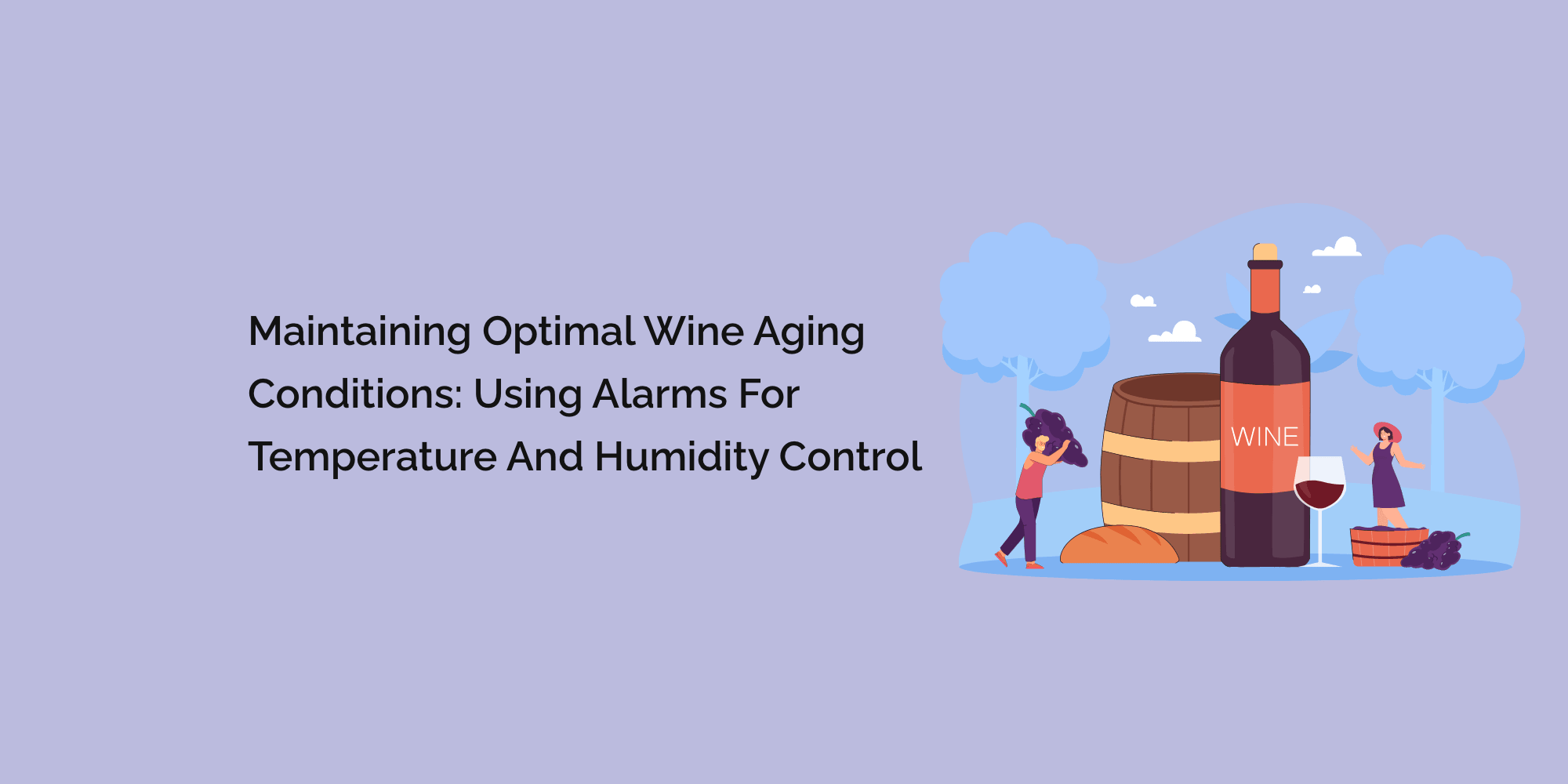For wine enthusiasts and collectors, achieving the perfect aging conditions for their prized bottles is essential. Temperature and humidity play a vital role in the proper maturation and preservation of wines. Fluctuations in these factors can have detrimental effects, such as premature aging, oxidation, or spoilage. This is where temperature and humidity alarms come into play. This blog will explore the importance of using alarms for temperature and humidity control in wine cellars. We will delve into the effects of temperature and humidity on wine aging, discuss the risks of inadequate management, and highlight how alarms provide a reliable solution. By maintaining precise and consistent conditions, cellar owners can ensure that their wines age gracefully, develop complexity, and reach their full potential.
Understanding the Impact of Temperature on Wine Aging
Temperature is a critical factor in the aging process of wines. We will discuss the ideal temperature range for wine storage and how temperature fluctuations affect wine quality. Additionally, we will explore the chemical reactions within wine bottles at different temperatures, emphasizing the importance of maintaining stable conditions for optimal aging.
The Role of Humidity in Wine Preservation
Humidity levels in wine cellars also play a crucial role in preserving wine quality. We will explain the ideal humidity range for wine storage and the impact of humidity on corks, labels, and overall wine stability. Proper humidity control is essential to prevent cork drying, minimize oxidation risks, and maintain the integrity of the wine.
The Risks of Inadequate Temperature and Humidity Control
Inadequate temperature and humidity control in wine cellars can lead to risks and potential wine spoilage. We will discuss the consequences of temperature fluctuations, such as accelerated aging, off-flavors, and loss of aroma. Additionally, we will explore how improper humidity levels can impact cork integrity, leading to leakage or spoilage.
Introduction to Temperature and Humidity Alarms
Temperature and humidity alarms are designed to monitor and control wine cellar conditions. We will explain how these alarms work, utilizing sensors to measure temperature and humidity levels. When deviations from the desired range occur, the alarms trigger alerts, allowing cellar owners to take corrective action promptly.
The Benefits of Temperature and Humidity Alarms
Using temperature and humidity alarms in wine cellars provides numerous benefits. We will discuss how these alarms help maintain optimal aging conditions by providing continuous monitoring and timely alerts. By keeping cellar owners informed, alarms allow quick adjustments to cooling systems, humidification devices, or ventilation to preserve wine quality.
Factors to Consider When Choosing Temperature and Humidity Alarms
Selecting the right temperature and humidity alarm system is crucial for adequate control. We will explore essential factors to consider, including the accuracy and reliability of sensors, customization options, user-friendly interfaces, remote monitoring capabilities, integration possibilities, ease of installation and maintenance, customer support, and value for money.
Installing and Setting Up Temperature and Humidity Alarms
We will provide step-by-step guidance on installing and setting up temperature and humidity alarms in wine cellars. This will include sensor placement recommendations, wiring considerations, and instructions for connecting the alarm system to a central monitoring unit or software.
Regular Maintenance and Calibration
Temperature and humidity alarms require regular maintenance and calibration to ensure accurate readings and reliable performance. We will discuss the importance of routine sensor calibration, cleaning, and battery replacement. Proper care helps maintain the longevity and effectiveness of the alarm system.
Monitoring and Responding to Alarm Notifications
When alarm notifications are triggered, it is crucial to respond promptly. We will guide how to interpret alarm notifications and the steps to take when temperature or humidity levels deviate from the desired range. This will include adjusting temperature controls, addressing humidity imbalances, and evaluating potential equipment failures.
Integration and Advanced Features
We will explore advanced features available in temperature and humidity alarms, such as remote monitoring capabilities, integration with other cellar management systems, and data analysis tools. The integration allows centralized monitoring and provides additional insights into wine cellar conditions and trends.
Certainly! Here are some frequently asked questions (FAQs) about using temperature and humidity alarms for wine cellars:
Why do I need a temperature and humidity alarm for my wine cellar?
Temperature and humidity alarms are crucial for maintaining optimal aging conditions in wine cellars. Fluctuations in temperature and humidity can negatively impact wine quality and lead to spoilage. Notices provide continuous monitoring and timely alerts to help prevent such issues and ensure wines age properly.
How do temperature and humidity alarms work in wine cellars?
Temperature and humidity alarms utilize sensors placed strategically in the wine cellar to measure environmental conditions. These sensors transmit data to a central monitoring unit or software, which analyzes the readings. If the temperature or humidity deviates from the desired range, the alarm system triggers alerts through various means, such as email notifications, SMS, or mobile app notifications.
What are the risks of inadequate temperature and humidity control in wine cellars?
Inadequate temperature and humidity control can result in accelerated aging, off-flavors, and even spoilage of wines. High temperatures can cause premature aging and oxidation, while low temperatures can slow aging. Improper humidity levels can lead to cork drying, mold growth, and label deterioration.
Conclusion
Maintaining optimal temperature and humidity conditions in wine cellars is vital to properly aging and preserving wines. Temperature and humidity alarms offer a reliable solution for achieving precise control and minimizing the risks of spoilage or degradation. By continuously monitoring cellar conditions and providing timely alerts, these alarms empower wine cellar owners to maintain stable environments, preserving the quality, flavor, and complexity of their cherished wines. Investing in a reliable temperature and humidity alarm system ensures that wines can age gracefully, allowing wine enthusiasts to enjoy the exceptional experience that well-aged wines offer.








